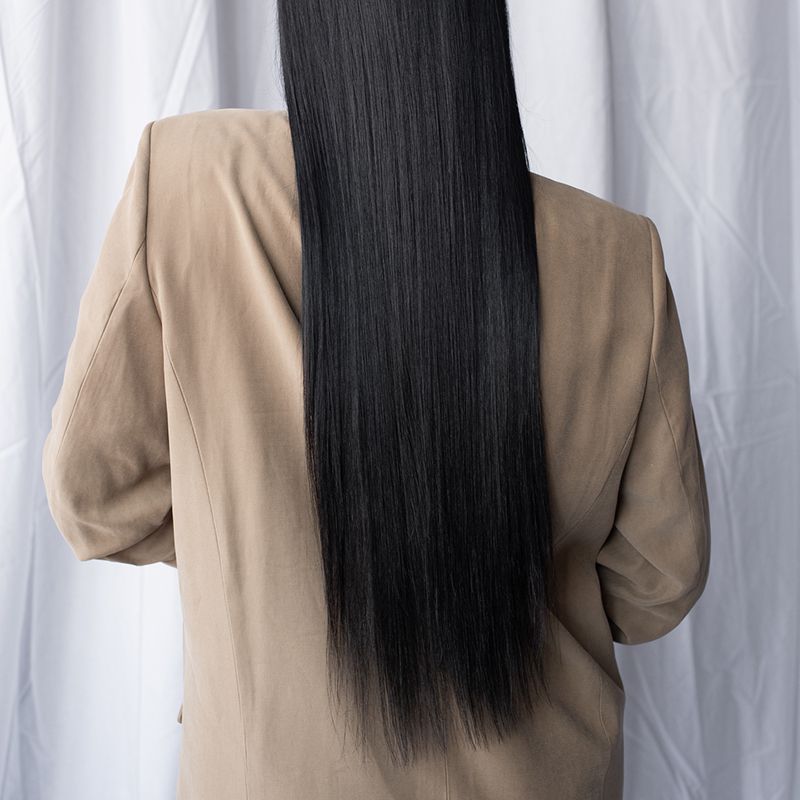You’ve probably heard of (and been saved by) dry shampoo, but have you tried dry conditioner? The not-as-popular counterpart is more valuable than you think, especially in times of frizz and flyaways. Think of it as the spray-in version of a leave-in conditioner—but less heavy, and therefore more wearable on the go.
Wondering if this is a practical product to add to your routine or just another trend? We turned to the experts to get the lowdown. Ahead, celebrity hairstylist Michelle Cleveland and stylists Rashuna Durham and Becca Sible give us the ins and outs of dry conditioner.
Meet the Expert
- Michelle Cleveland is a celebrity hairstylist at Hair Addict Salon in New Jersey. Her clients include Christina Milian, as well as familiar faces from VH1’s Mob Wives and Bravo’s Real Housewives franchise.
- Rashuna Durham is a stylist and lead pro educator with the Amika pro team.
- Becca Sible is a stylist and lead pro educator with the Amika pro team.
What Is Dry Conditioner?
Unlike dry shampoos, (new) dry conditioners are not powder, but instead are typically created with oils and other conditioning ingredients. “Dry conditioner is a product that’s sprayed on hair and doesn’t require water the way a traditional conditioner does,” says Durham. “It can be used alone as a finishing spray to hydrate dry hair or to refresh your hair mid-day. It helps moisturize and detangle hair, fight frizz, and boost shine.”
Think of it as your go-to during times of random rain, humidity, or the ever-so-frustrating flyaways that you wish would actually… fly… away.
How to Use Dry Conditioner
When using a dry conditioner, the general application will feel similar to dry shampoo or hairspray, but the placement will differ within the hair. “Typically, it’s best to shake up your can of dry shampoo prior to spraying,” Cleveland begins. “Since there tend to be natural oils inside, they may settle at the bottom of the can when not in use. By shaking before an application, you are ensuring that all ingredients are mixed together well and will eject from the can together on each spritz.”
After shaking the can, you’ll want to hold it about six to eight inches away from your hair, Cleveland directs. Just like a regular conditioner, you’ll want to avoid the root and scalp area to avoid any greasiness or buildup. “The best way to apply dry conditioner is by spraying on the mid-lengths to the ends,” notes Durham. “Adding a little heat will help distribute the product.”
“For a more even disbursement, gently muss the hair afterward to spread the product around,” adds Cleveland.
When to Use Dry Conditioner
Similar to dry shampoo, you’ll typically reach for dry conditioner on days where the hair needs just a touch of help. “It’s best to reach for your dry conditioner when your hair feels dry, static-y, frizzy, or like its starting to get those tangles,” Durham says. “A quick spray of dry conditioner will extend your style for a couple more days with hydration.”
Greasy hair remains the enemy, and often times your dry shampoo and conditioner will work in unison as the dream team to keep roots fresh and ends holding a healthy glow. “On day two or three when your roots are greasy, add dry shampoo to absorb oil and refresh your roots,” says Sible. “Spray dry conditioner on your mid-shaft and ends to lay down frizz, add moisture back into the hair, and add shine. Avoid dry conditioner near your roots. You can only get away with using a dry conditioner for two to three days. After that, it can begin to look greasy.”
On the topic of avoiding grease, Cleveland notes: “Dry conditioner is best used in between traditional washes to help prevent the hair from looking dehydrated and lackluster. I would recommend avoiding the use of a dry conditioner on the same day you wash and using a traditional conditioner [instead], as it could result in a greasy overly shiny appearance.”
Durham also notes that dry conditioners are typically best for fine or medium hair, but given that all hair can struggle with dryness and frizziness, finding the right product for your texture is important when picking a dry conditioner to add to your routine.
Dry Conditioner vs. Dry Shampoo
Think of dry shampoo and dry conditioner like Batman and Robin. One may be more spoken about, but both are heroes and get the job done. “Using both products can be your secret weapon to extending the life of your blowout,” Durham says. “It’s your dynamic duo for a waterless wash.”
While the pair work well together as a team, their actual roles in preserving hair differ. “Dry shampoo is used at the root or scalp area and is primarily used to absorb excess oils that collect on the skin to give a fresh look to unwashed hair,” says Cleveland. “They may also provide texture and volume to fine hair,” adds Durham.
“Dry conditioner is essentially a dry version of a wet leave-in conditioner,” says Cleveland. “Adding hydration to the hair strands between washes, dry conditioner delivers a burst of ingredients including natural oils to the hair without having to wet and wash.” Adds Durham: “Your dry conditioner can detangle and de-frizz, adding softness and shine to your hair.”
The Best Dry Conditioners on the Market
The experts were quick to call out their mutual—and only—pick for the best dry conditioner on the market, so we decided to test out a few for ourselves to compile our list of other top picks.
:max_bytes(150000):strip_icc()/Amika-42325ac7ebe445e8ad705b58287e82ba.jpg)
:max_bytes(150000):strip_icc()/detoxdryconditionerfullsize_1-30fbf35af60c46f5a0868ac02c075bf5.jpeg)
:max_bytes(150000):strip_icc()/71kVNFoEr6L._SL1500_-bd2dd900641b450caa531611e58a698f-182b6c53038a45d598c77bcbca919a58.jpg)
:max_bytes(150000):strip_icc()/71kVNFoEr6L._SL1500_-bd2dd900641b450caa531611e58a698f-182b6c53038a45d598c77bcbca919a58.jpg)
R+Co
Rainless Dry Cleansing Conditioner
$32.00
I was excited to try R+Co’s newest launch, which Review2Coupon contributing writer Rachel Dube raved about: the Rainless Dry Cleansing Conditioner. Made with banana extract, lemon balm, black currant seed oil, ashwagandha, and ginkgo biloba, the formula was extremely lightweight and gentle on both my hair and scalp (though it is recommended you only place dry conditioner from the middle to ends of your hair). I sprayed this on two-day-old hair that had frizz and flyaways due to a mix of bedhead and brushing and found that it did a solid job of containing the hair for the remainder of the day.
The Final Takeaway
If you’ve been searching for the answer to your frizzy hair woes, dry conditioner just might be it. Think of it as a far less intense hair oil that tames the hair without a greasy unwanted glow. Experts agree it’s a great solution when you’re looking for a silky smooth finish.
We Tested All the Best Dry Shampoos—These 11 Are Our Favorites










